Don't wanna be here? Send us removal request.
Text
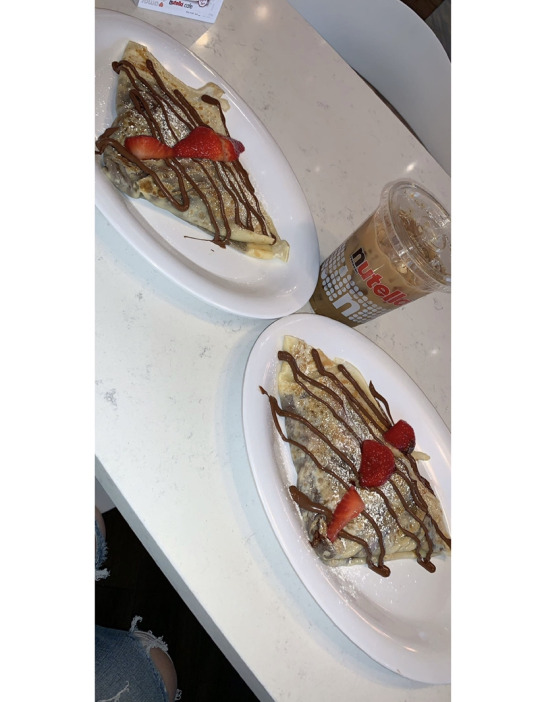
My photographs are graphic statements. They are metaphors for the way I look at my life. My concepts, ideas, and feelings are not likely to be identical to those of others. They are as personal as my own fingerprints. I believe that the images I create correspond to the experiences in my own life. I am learning to see things through my own eyes so that I can present my subject, some perceptual and some expressive, in a way that will transmit my feelings for it to others. A photograph isolates a moment of time, an important and revealing moment, or an unimportant and meaningless one depending on my understanding of my subject and of my craft. The camera is completely honest. Its vision is completely impartial and undiscriminating. Selection, emphasis and meaning of subject matter is provided solely by me in my compositions.
Rendering detail, tone, perspective, texture, shade and shadow enables me to present my composition in the strongest manner. At times it is an unconscious operation: when I don’t have to think about how I am doing or what I am doing. At other times it is a more mechanical and controlled process. Being a successful photographer for me means developing a trained eye, a disciplined technique, a keen perception, and a quick creative judgement. To be a successful photographer I will need all the above, plus the first requisite for an artist which is something to say.
0 notes
Text
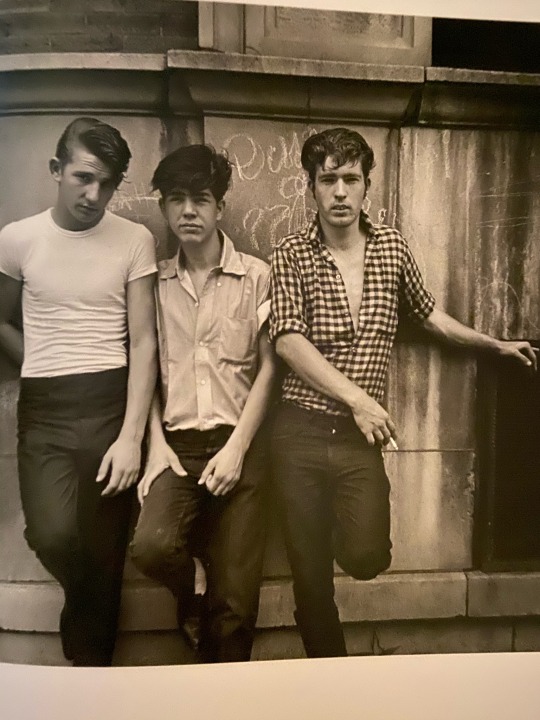
Uptown, Chicago,1965 NO.31
Bryanna Malandro
Danny Lyon
All of Danny Lyon’s published series are part of a new type of journalism know as “New Journalism”. This type of journalism began in the 1970’s. Photojournalists such as Danny Lyon immersed themselves in their stories. In the past, photojournalists tried to remain objective and removed from the story. Lyons often focused on feelings and became friends with the people he photographed. Some of those he photographed were workers in the demolition of buildings in lower Manhattan. Others were people he met on the streets of Downtown Chicago. He knew their names, their jobs and often the sad stories of their lives on the streets. Lyon had the ability to engage people. This allowed them to be themselves in front of a camera. The two bodies of work that I chose for this project are “The Destruction of Lower Manhattan” 1967 and “Uptown Chicago” 1965.
“The Destruction of Lower Manhattan” is best described as an” urban renewal”. Industries were leaving lower Manhattan and leaving behind a city abandoned and decaying buildings that were falling apart. The financial district moved to midtown Manhattan and fruit/vegetable suppliers moved to New Jersey causing the Washington Street market to close. All that remained in this part of lower Manhattan were 19th century residential and industrial buildings. The buildings were empty and falling apart. The plan was to demolish the buildings and streets of lower Manhattan and build a “new neighborhood”. This neighborhood was designed to attract middle- and upper-income people which was referred to as “urban renewal”.
Danny Lyon realized the end of an era was coming upon us. Lower Manhattan as we knew it would soon to gone as if it never existed. Lyon picked up his camera and began taking photographs. He took photographs of the decaying buildings and the workers hired to remove these buildings. These series of photographs became known as the series “The Destruction of Lower Manhattan”. Lyon took a picture of each building before it was destroyed. Many of the photographs in this series are the only pictures of entire blocks of buildings that were located on Fulton Street and West Street along the Hudson. Many of the pictures in this series are taken with a 35mm camera. Others were taken with a view camera. In this series, Lyon took photographs focusing on the buildings, demolition works and the last remaining people still working in the area.
The 2 photographs I chose from “The Destruction of Lower Manhattan” series are the following:
82 Beekman Street, New York, 1967
This is one of a series of black and white still photographs which document the demolition of older buildings in lower Manhattan, making room for newer and more modern buildings. This picture captures the view of a partially demolished building from an elevated height. It shows men working using a burner to cut the bolts in the cast iron front of 82 Bleeker Street. The cast iron is smashed into pieces with a sledgehammer. Eventually, the building is reduced to a pile of rubble. This picture conveys feelings of coldness and sadness. It is very sad that this beautiful 19th century building is being destroyed and removed. This building has so much architectural detail. The new and more modern building that will replace it could never have the same beautiful curbside appeal.
Staircase, 183 William Street, New York, 1967
This photograph’s emphasis is shapes. The staircase is mostly in a triangular form but also can be viewed as the letter Z. It has clean, concise straight lines. The light, shade and shadow creates warm and cold tones. This picture creates a feeling of order and peace. However, soon after this picture was taken, the staircase was broken apart never to be photographed again. This picture, as well as the series “The Destruction of Lower Manhattan” gives me a feeling of sadness. This area was transformed from beautiful, detail-oriented buildings, to a pile of trash. It is almost like a death has occurred.
In the series “Uptown Chicago”, Danny Lyon used documentary photography taking photographs of people in tough, poor neighborhoods. Lyon returned to Chicago, where he had studied photography. He began spending time on the rough streets of Uptown Chicago. At this time (1965), Uptown Chicago was the home of Appalachian immigrants. He took pictures of the people in this struggling neighborhood. Lyon realized later in his life that there were two groups of people in Uptown Chicago. There were “those that made it out and did well and those that were so addicted and were still there”. This series documents a sad era in Uptown Chicago. It is a series of photographs of young people living in the city. They are still black and white photographs. Typically, we would walk right by a group of kids like this without really focusing on them. These photographs capture a moment in time allowing us to the study the individuals and details of their surroundings.
Uptown Chicago, 1965, Plates 30,31
The young boys in these photos appear to be sloppy. Their clothing is wrinkled, dirty and oversized. Their surroundings seem to be that of a lower-class community. There is discarded garbage on the floor and graffiti on the walls. In pictures 30, the boys seem younger in age than those in picture 31. They appear to lack supervision and direction. I get the feeling they are looking for trouble. The boys in picture 31 appear to be an older version of the boys in picture 30. They may be older in age, but seem stuck in the same spot in life. They appear to not have progressed in life and maybe never will. The two bodies of work are similar in nature in that they are both black and white photos. They both are documentary, meaning they were taken to document a specific time and/or event. Also, they both contain photographs taken in the mid 1960’s. The photographs are all gelatin silver print. This is when a black and white picture is developed using 3 layers- papers, baryta and gelatin. The differences are that “The Destruction of Lower Manhattan” are photographs of buildings. These buildings are being destroyed and can never be put back together again. Their existence is over. The buildings are objects and do not have feelings or emotions. The subjects in the series “Uptown Chicago” are photographs of young boys. Their life story has not been written yet. They have a chance to change their lives for the better. Unlike the pictures of the buildings in Manhattan, they have emotions and feelings.
Works Cited Page
Danny Lyon-Message to the Future
Author Julian Cox
0 notes
Text
0 notes
Text

My Grandpa... An American hero and My hero
Coming to a meeting with me
0 notes
Text
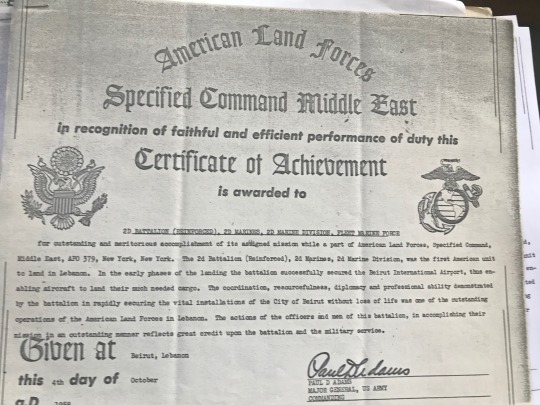
Certificate of achievement awarded to corporal Lawrence D. Levy accomplishing a Vidal mission
0 notes
Text
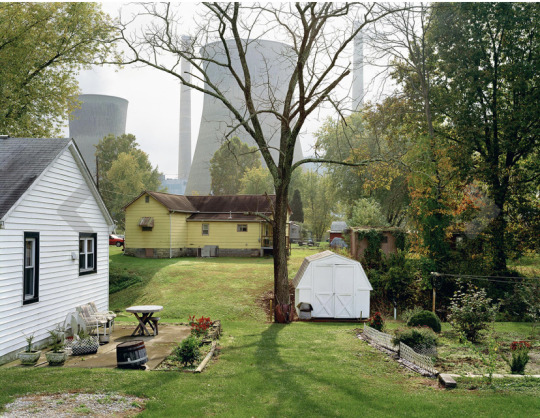
Mitch Epstein work began when he returned to his family home so he could support his parents through a crisis that would put his fathers livelihood at risk. Epstein began to use photography and also a DVD camera so he could investigate how his fathers hard work and honest ethics, which it involved values from post American war. This almost resulted in a family tragedy. Epstein photograph his fathers life. He photograph his home, business and country club. Epstein made a series of portraits of people which includes his fathers employees, family and friends. The photographer eventually turned his work away from vibrant portrayal of circles of friends and domestic dramas towards more isolated, detached and solitary portraits.
Epstein images pull us deep into these landscapes they leave us wondering. According to the picture it could be late summer or early fall. One of the tree leaves started to change it is a orange color, however the tree in the middle has no leaves which alludes to probably early fall. The weather is most likely a dreary day because the background is grey and there are no clouds in the sky. What I find unique about this photographer is even though it’s a dreary background he still includes color. I like that he includes a bunch of objects and includes full space.
0 notes
Text
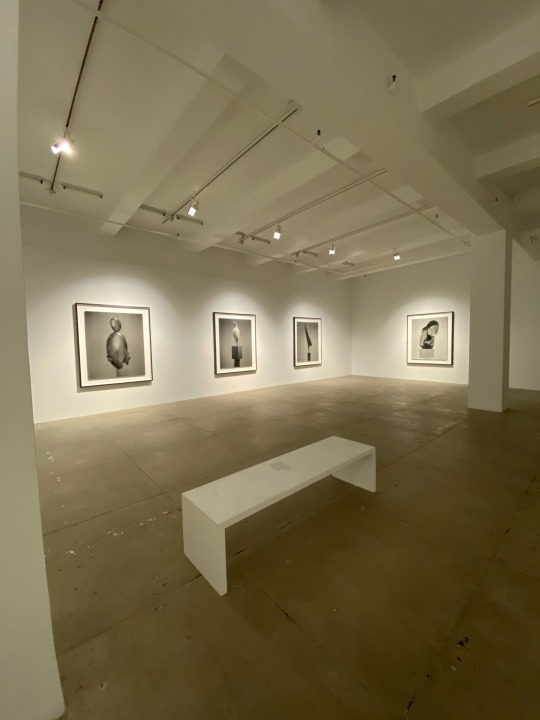
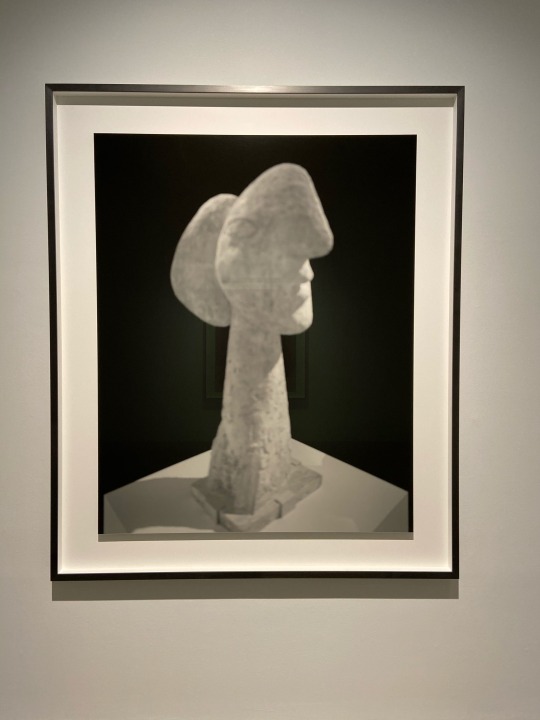
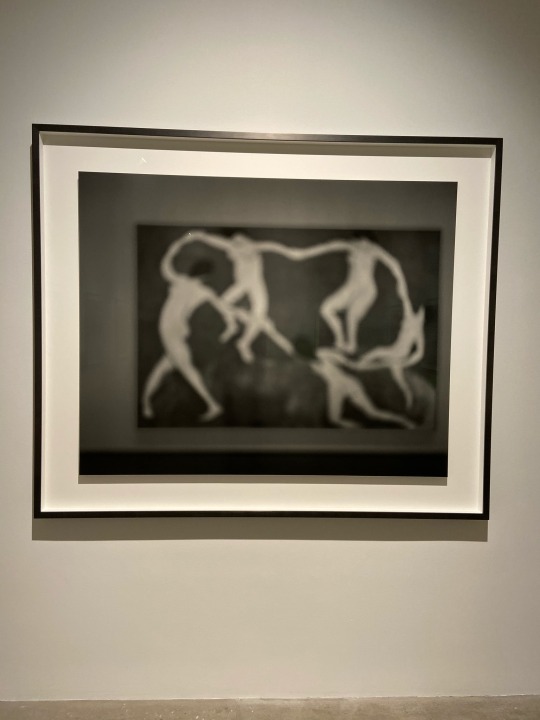
Hiroshi Sugimoto was born on 1948 in Tokyo. He’s a 71year old man. His love of photography began early on in his life. He began taking his first photographs when he was in high school. His first photographs were of the famous actress Audrey Hepburn. He took photographs of her as film footage of her played in the movie theater. Hiroshi received his BA from Saint Paul’s University which is located in Tokyo in 1970. He decided to travel west after graduation and settled in Los Angeles. In Los Angeles he attended the Art Center College of Design and received his BFA. In 1972. In 1976 he moved to New York where he visited the American Museum of Natural History. Hiroshi was immediately mesmerized by the dioramas of people and animals. He became intrigued by how lifelike they appeared. This experienced prompted him to begin the first of his Diorama Series. This series, along with Seascapes and Theaters series started in 1976 and continue through the present. He has had other ongoing series which included waxwork figures, drive in theaters and Buddhist sculptures. All of these series blur distinctions between real and imaginary. Some of his other series of photographs included the subject matter of burning candles, blurred images of Modern architecture, photographs depicting the manipulation of shadows and light and the idea of textual components. Sugimoto has had many solo exhibits including his latest solo exhibit at the Marian Goodman Gallery in New York.
Besides photography, Sugimoto’s artistic background includes sculpture, architecture, writing and the performing arts. He favors black and white photographs. He used the same camera, a box camera throughout his entire career.The aesthetic experience of the physical exhibit space is that of a studio with three basic elements; wall, floor and ceiling. The open space, with subdued finishes, offers a continuous flow of movements so that our visual experience is focused on the art works. The exhibit consists of 22 photographs. The works on display are Abstract Art. Abstract artists use their subjective experiences to create “abstractions” from nature. The images they create have structural characteristics we objectively perceive and at the same time they re-form the whole image with their intuitive subjective interpretation, which inspires the viewer to experience new and strange thoughts about the world that surrounds us.
The two photographs I chose to describe and critique are Dance (1) Henri Matisse and Head of a Woman, Pablo Picasso.
Dance (1) Henri Matisse
The drawing of the human forms holding hands and dancing in a circular movement create a sense of tranquility. They intrigue one’s thoughts and feelings about space and movement.
The artist attracts you to the abstract human forms by their shapes and positions. What you find interesting in this work does not depend on what the forms represent by association to the viewer-you may see faces or figures, or you may see textures and movements and abstract forms. Thoughts, feelings, and mental images concerning, the bodies are released, and each person’s experience is unique. The human forms holding hands are expressive and perceptual.
My personal response will differ from that of another viewer. My concepts, ideas and feelings are not likely to be identical, and my reaction will be my own. It feels spontaneous with no sensation of tension.
Head of a Woman, Pablo Picasso
You are able to pick out various aspects of a women’s head; skull-shaped front view with its eyes and large nose which begins at the top of her forehead. These different parts are put together by the artist in such a way that it causes our sensations to see it in a different way.
This is an order which satisfies the need of our experience of perception. Yet, it is also a re-creation of a woman’s head into a new image with new sensations and experiences.
The image is not an illustration of a woman’s head, but rather evokes an essence of a women’s head. The abstract image of a Head of a Woman is used as a symbol to comment on the beliefs and values of our society and culture. Most people would agree that the image may not be described as a beautiful woman. Her head, neck and facial features are not proportioned to our idea of beauty. There is no serenity here. In fact, the reverse is felt. The shape and features of the woman’s head give me a feeling of unease. I feel that I need to look at the sculpture from all sides, which I cannot do from the photograph, because there are aspects of the work that cannot be seen from one particular viewing position.
There is discovery in all the drawings, such as Dance, the invention of forms form the artist creates and reveals the physical nature of the world.
The artists attract you to the dominant shapes by the heavy weight of the line of the dancers.
In a great work of art, such as Dance, the emotional intensity is forte-strong and heavy.
A three-dimensional aesthetic experience on a two-dimensional surface, which the photograph succeeds in allowing the viewer to discover.
Head of a Woman is a case where the artist, inspired by nature, has produced a three-dimensional stylized form rather than a natural form.
I feel it is not a good thing to compare a photograph of a sculpture to the sculpture itself.
The fundamental difference between the sculpture and a photograph is our visual involvement requires that we be able to view the sculpture form all sides by walking around it and not from one particular viewing position.
The photograph is a strong image of an object which is a symbol that evokes the beliefs of our society about women.
0 notes












































